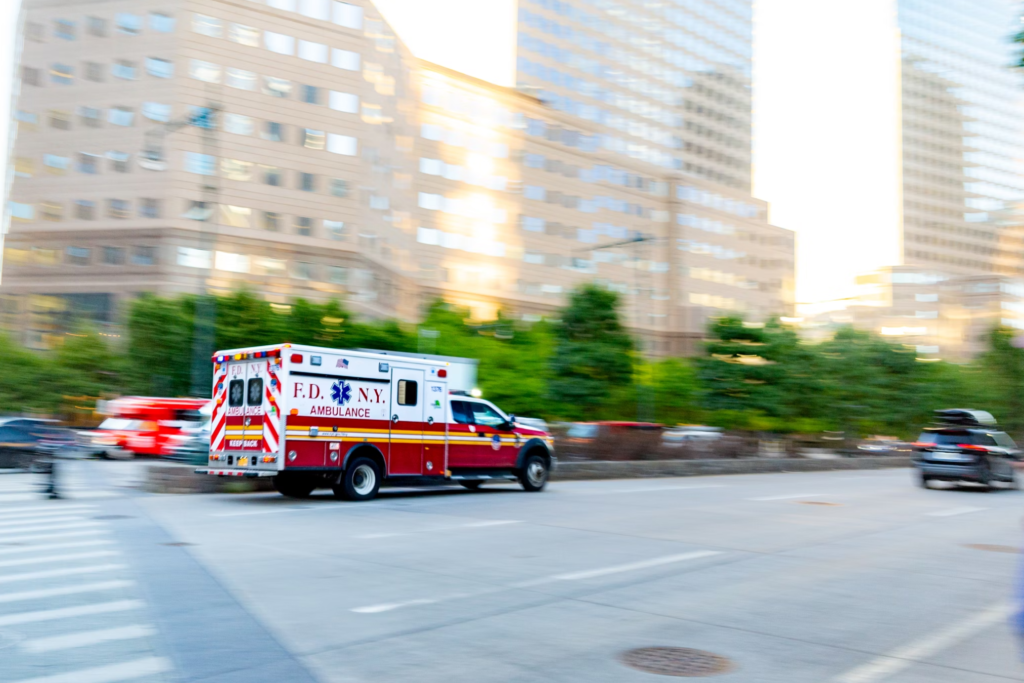Emergency vehicles, essential for swift responses to crises, are the lifelines of public safety systems. Yet, the very vehicles designed to save lives can sometimes become involved in accidents themselves, posing significant challenges to public safety.
In Colorado, where bustling urban centers meet sprawling rural landscapes, the risks and impacts of emergency vehicle accidents are particularly pronounced. Understanding the causes, consequences, and broader implications of these incidents is crucial for safeguarding public safety across the state.
The Vital Role of Emergency Vehicles
Emergency vehicles in Colorado serve as crucial components of the state’s public safety infrastructure, responding to a wide range of emergencies. This includes medical crises, fires, and law enforcement situations. As per the Colorado Department of Public Health, there are 205 registered ground ambulance agencies and 31 registered air ambulance agencies in Colorado.
In urban areas like Colorado Springs, where population density is high, the rapid deployment of emergency vehicles is essential for timely response to accidents. In remote mountainous areas like the Rockies, specialized emergency vehicles are crucial for reaching people in need due to challenging access.
Factors Contributing to Emergency Vehicle Accidents
Several factors contribute to emergency vehicle accidents in Colorado. This includes congested roadways, adverse weather conditions, and the mountainous terrain prevalent in many parts of the state.
Additionally, the high speeds at which emergency vehicles often travel, especially during urgent responses, can increase the risk of collisions. Moreover, distractions inside the vehicle, such as communication devices or onboard equipment, can divert the attention of emergency responders from the road ahead. This further elevates the likelihood of accidents.
KRDO reports that on March 25, 2022, an ambulance that was responding to a call was involved in an accident in Colorado Springs. It was struck by another vehicle at a high speed just after it had passed the intersection of Platte and Circle.
The incident underscores the challenges emergency vehicles encounter while swiftly maneuvering through traffic to reach emergencies. It sheds light on the importance of heightened caution and awareness from both emergency responders and other motorists to prevent such collisions.
How Technology Can Help With Accident Prevention
Proactive measures are essential to address the risks associated with emergency vehicle accidents in Colorado. This includes ongoing training and certification programs for emergency vehicle operators, emphasizing safe driving practices and hazard awareness.
Investments in advanced safety technologies, such as collision avoidance systems and vehicle telemetry, can significantly enhance the situational awareness of emergency responders. Collision avoidance systems can detect potential hazards and automatically apply brakes or provide warnings to the driver, reducing the likelihood of accidents.
Vehicle telemetry enables real-time monitoring of vehicle performance and driver behavior, allowing for immediate corrective actions and data-driven improvements in training programs.
Public education campaigns promoting awareness of emergency vehicle operations and the importance of yielding the right-of-way can also benefit from technology. Utilizing digital platforms and social media can amplify the reach and impact of these campaigns. This can help ensure that the public is well-informed and more likely to cooperate with emergency responders.
Legal Proceedings in Emergency Vehicle Accidents
In Colorado, legal considerations following emergency vehicle accidents encompass a range of issues. This includes things such as determining fault, assessing liability, and facilitating fair compensation for victims. The state’s laws governing emergency vehicle operations and traffic regulations play a crucial role in establishing standards of care and responsibility.
Additionally, Springs Law Group notes that legal proceedings, such as civil lawsuits, may be initiated to seek redress for damages resulting from accidents.
In Colorado Springs, an urban center nestled against the backdrop of the Rocky Mountains, the complexities of emergency vehicle accidents are particularly pronounced. With a growing population and extensive road networks, the city presents unique challenges for emergency responders navigating through congested streets and high-traffic areas.
In the aftermath of an emergency vehicle accident, individuals may seek legal recourse to address injuries or property damage. Consulting with an experienced auto accident attorney in Colorado Springs can provide invaluable guidance and advocacy throughout the legal process. This ensures that victims receive fair compensation and justice for their losses.
Impacts on Public Safety and Trust
The National Safety Council states that in 2022, a total of 224 people lost their lives in accidents involving emergency vehicles. These accidents can have significant impacts on public safety and community trust in emergency services. When accidents occur, response times may be affected, potentially delaying critical assistance to those in need.
Furthermore, incidents involving emergency vehicles may erode public confidence in the professionalism and reliability of emergency responders. This can undermine the effectiveness of public safety initiatives and programs. Therefore, it is crucial that public safety agencies in Colorado make concerted efforts to prevent such accidents.
FAQs
What is the greatest risk in driving an emergency vehicle?
The greatest risk in driving an emergency vehicle is the potential for accidents due to the need for high speeds and maneuvering through traffic. This can lead to collisions with other vehicles or obstacles.
What is the speed of an ambulance?
The speed of an ambulance can vary, but it typically ranges from 60 to 80 miles per hour when responding to emergencies.
What do you do when driving around emergency vehicles?
Drivers should pull to the right side of the road and come to a total stop until the emergency vehicle passes.
In conclusion, the complexities surrounding emergency vehicle accidents in Colorado demand multifaceted solutions to safeguard public safety. Understanding the causes, legal considerations, and impacts on community trust is paramount. Proactive measures, including ongoing training, advanced safety technologies, and public education campaigns, can mitigate risks and enhance accident prevention efforts.
By prioritizing safety and fostering collaboration between emergency responders and motorists, Colorado can strive towards a safer and more resilient public safety ecosystem. Through collective vigilance and commitment to best practices, the state can navigate the challenges posed by emergency vehicle accidents.

